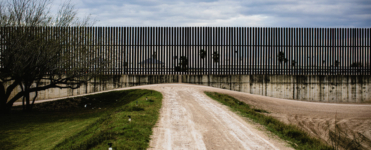
How The Dignity Act Can Restore Order to The U.S. Border
A majority of Americans believe that Congress should address the crisis at the border and grant a permanent solution for Dreamers before the 2022 elections. Representative Maria Elvira Salazar’s recent introduction of the Dignity Act is an opportunity for lawmakers to accomplish both.
Major provisions of the Dignity Act include:
- A mandated floor of approximately 22,000 Border Patrol agents and 27,000 U.S. Customs and Border Protection Field Officers to be implemented by 2025.
- The deployment of the most up-to-date technology and the disruption of smuggling tunnels.
- A five-year time frame to fully implement a biometric exit system that combats visa overstays.
- A pathway to permanent residency for Dreamers and agricultural workers who meet specific employment, higher education requirements, or military service requirements.
- A pathway to permanent residency for some individuals eligible for Temporary Protected Status.
- A 10-year pathway to a renewable visa for some unauthorized immigrants who pay a total of $10,000 in fines and attend biannual check-ins. After completing this pathway, migrants have a one-time opportunity to pursue a five-year path to permanent residency, which entails completing civics courses, additional payments, and community service.
These provisions somewhat echo the measures outlined in Ronald Reagan’s Immigration Reform and Control Act (IRCA) of 1986, which also aspired to stop illegal immigration by appropriating funds that bolstered security staff and upgraded border technology.
Two years after Reagan signed the bill into law, unlawful border crossings dropped by as much as 2 million. This success, however, was only temporary, and illegal crossings eventually resumed, growing from 3 to 12 million two decades after the bill’s passage.
This raises a key question: If Reagan’s bill didn’t stop illegal immigration, how would the Dignity Act be any different?
Part of the answer is that the Dignity Act contains an essential border enforcement tool that Reagan’s bill lacked — an increase in legal work visas.
How legal immigration stops illegal immigration
When combined with a well-patrolled border, expanding legal channels curtails illegal immigration by allowing more migrants to enter legally once they receive a U.S. job offer and get screened.
This was evident during the 1950s, when the U.S. expanded the Bracero program, which allowed U.S. farmers to hire migrants from Mexico to perform agricultural work.
Though the program began in 1942, the U.S. government acted as the sole distributor of Mexican workers to U.S. farms. In 1954, however, the program grew in popularity after reforms allowed employers to directly hire workers they trusted and easily extend their contracts.
As usage of the Bracero program surged, border apprehensions plummeted from 885,000 to roughly 45,000 — a 95 percent drop in just five years.

Source: “The Impact of Agricultural Guest Worker Programs on Illegal Immigration” by Stuart Anderson (National Foundation for American Policy).
Border security forces knew that the Bracero program complemented their enforcement efforts and actively promoted the program to deter illegal immigration.
One Border Patrol document from 1958 warned that if there was “a restriction placed on the number of braceros allowed to enter the United States, we can look forward to a large increase in the number of illegal alien entrants into the United States.”
In 1960, however, pressure from labor unions caused the U.S. to restrict the Bracero program by depriving employers of their ability to pre-select trusted workers.
Employer utilization of the program dropped by 30 percent in just one year, while apprehensions increased by 55 percent. As the chart below shows, these trends continued through the Bracero program’s official termination in 1964.

Source: “The Impact of Agricultural Guest Worker Programs on Illegal Immigration” by Stuart Anderson (National Foundation for American Policy).
The relationship between available legal channels and border apprehensions can also be seen between the years 2000-2018.
Though the U.S. government was taking extensive steps to ramp up enforcement, such as tripling the number of hours that personnel were patrolling the border, Mexican apprehensions didn’t start falling until the U.S. added a premium processing option for the seasonal H-2A (agricultural) and H-2B (non-agricultural) visas, which allowed employers to pay more to receive their visas in a reasonable timeframe.
When H-2 visa usage shot up from 55,000 to 550,000 per year, illegal immigration from Mexico collapsed by 91 percent.

Source: “Three Facts You Haven’t Heard Much About Are Keys Toward Better Policy in Central America” by Michael Clemens and Jimmy Graham (The Center for Global Development).
When given the opportunity, most migrants will choose to enter the U.S. legally rather than risk being banned for crossing illegally.
Even when migrants aren’t successful at obtaining a visa on their first initial try, the expectation that they will obtain a visa the following season can encourage them to wait. But when migrants don’t see a legal path available for them, such penalties no longer matter.
While guest worker visas have previously helped reduce illegal crossings from Mexico, they haven’t been prevalent enough to reduce most illegal immigration — especially since the advent of COVID-19.
After seeing historic drops of unlawful Mexican migration, crossings for this group have once again surged following the U.S.’s economic recovery.
How does the Dignity Act reform legal channels?
So how does the Dignity Act increase the availability of work visas? It does so in several transformative ways.
First, it streamlines the costly and convoluted application process, which often shuts many small businesses out of the H-2 programs.
The chart below is a zoomed-out illustration of all the hoops that employers must jump through to obtain an H-2A visa.

Source: “One Image to Capture the Unending Complexity of the H-2A Visa Program” by David J. Bier (Cato Institute)
The Dignity Act would consolidate this process by creating a single platform where businesses can submit the same documents to different agencies for approval. This eliminates countless pages of redundant paperwork that deters farmers and small businesses who need the program most.
The Dignity Act also enacts major improvements that place special focus on the H-2A program.
Though the visa is uncapped, H-2A workers only represent about 10 percent of U.S. farmworkers, whereas unauthorized workers represent as much as 75 percent.
The Dignity Act would make it easier for farmers to plan by allowing them to petition workers for as many as 10 alternative start dates to account for fluctuations in labor needs.
The bill would also allow year-round industries like pork and dairy to use the program and broaden the definition of agriculture so that the visa may be used for forestry, cider pressing, and other professions.
The Dignity Act also reforms the seasonal H-2B program by allowing employers to exempt their returning H-2B workers from the 66,000 annual caps if they had entered the U.S. through the program within a three-year period.
These exemptions would make thousands more visas available. In 2004, when Congress temporarily exempted returning workers from the H-2B cap, the program doubled in size.
In addition to making the H-2 programs more accessible, the Dignity Act will also spread awareness of their availability to migrants through targeted messaging campaigns. Messaging that provides migrants with accurate information about the legal channels available to them is shown to be more effective at reducing dangerous crossings than messaging that highlights the dangers.
Even when migrants are fully informed of the risks involved, many migrants still choose to take the dangerous journey. At the same time, Central American governments have cited lack of knowledge as a major reason the H-2A program is rarely utilized by their citizens.
Enhancements to border security and legal channels are complementary, not competing objectives.
From 2006 to 2020, the U.S. has spent $6.5 billion more on immigration enforcement than it has on all five main criminal law enforcement agencies combined.
Though these efforts have had some small success at reducing unlawful crossings, the recent border surges of 2019 and 2021 reveal that U.S. taxpayers aren’t getting their money’s worth.
The U.S. must address gaps in border security, which includes staffing vacancies, malfunctioning equipment, and inadequately deployed technology. But a nation’s borders are best defined when complemented with orderly legal channels.
Just as a nation’s legal immigration system can’t function well without secure borders, a nation’s borders can’t be secured without broad access to legal migration opportunities. The Dignity Act deserves praise for addressing both.



